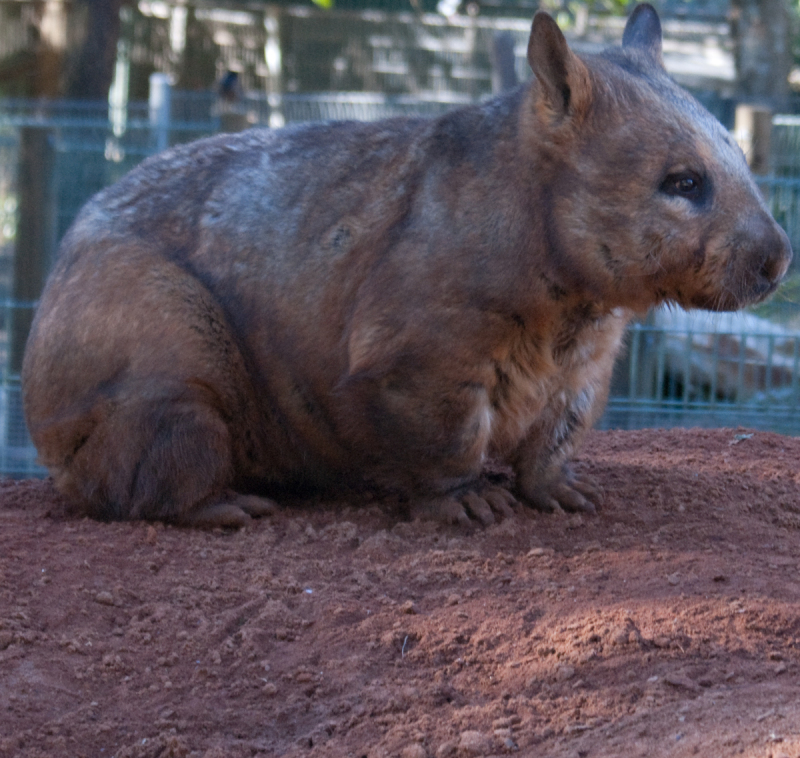Colours
Distinguishing features
It has a stocky and robust build, flattened claws and five digits. Its short tail is hidden by its fur. The pelage is silky and is typically greyish or tan in colour. Its second and third toes are fused together except at the tips.
The head is robust and flattened and the ears are pointed. The snout resembles that of a pig. The animal gets its name from the hairs that cover its rhinarium. The wombat's incisors resemble those of rodents, and have molars are widely spaced by the palate.
Compared to the common wombat, the southern hairy-nosed wombat has a larger temporalis muscle and a smaller masseter muscle. Also, unlike the northern hairy-nosed wombat, the southern hairy-nosed wombat’s nasal bone is longer than the frontal bone. (Wikipedia)
Size
- Up to 93 cm (Length of specimen)
Weight
- Up to 32 kg
Synonyms
Distribution
Distribution and habitat preferences
It is found in scattered areas of semiarid scrub and mallee from the eastern Nullarbor Plain to the New South Wales border area.
Diet
Southern hairy-nosed wombats, along with other wombat species, select native perennial grasses and sedges, but do consume introduced pasture species, forbs, and the leaves of woody shrubs if their favoured food is not available. (Wikipedia)


